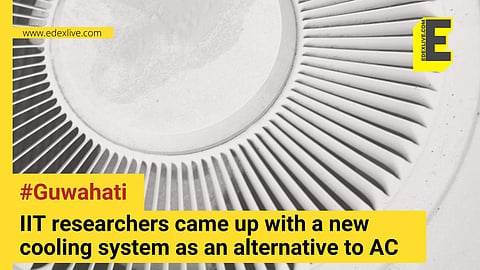

Researchers at the Indian Institute of Technology (IIT), Guwahati, have designed a 'radiative cooler' coating material as an alternative to the air-conditioning (AC) system, which can be operated without electricity. Additionally, it is said that this new material is inexpensive.
Based on what officials said, the material can be applied on rooftops and is operational during the day and at night, hence it is an electricity-free cooling system that comes forth as an alternative to AC, as stated in a report by PTI.
A research scholar at IIT Guwahati, Ashish Kumar Chowdhary, explained, "Passive radiative cooling systems operate by emitting heat absorbed from the surroundings in the form of infrared radiations that can pass through the atmosphere before getting dumped into the cold outer space. Most passive radiative coolers operate only at night. For daytime operation, these coolers need to reflect entire solar radiation as well."
Giving more details on the cooling systems, the research scholar said, "Till now, these cooling systems have not been able to provide sufficient cooling during the daytime. We are set to resolve these issues and bring out an affordable and more efficient radiative cooling system that can operate round-the-clock." Another 'adding a feather to the cap' moment was when their innovation was published in the Journal of Physics D: Applied Physics by IOP Publishing, United Kingdom.
Speaking about the difficulties faced, the Assistant Professor, Department of Electronics and Electrical Engineering, IIT Guwahati, Debabrata Sikdar, said, "Designing a passive radiative cooler for daytime operation is more challenging due to the simultaneous requirement of high reflectance in the entire solar spectral regime and high emissivity in the atmospheric transmittance window."
Further, explaining in detail, the assistant professor said, "These radiative coolers requiring no external energy sources for their operation could be one of the best alternatives to replace the conventional air conditioning systems used to cool buildings and automobiles in countries experiencing hot weather, such as India. Unlike traditional cooling technologies that dump the waste heat into the surroundings, radiative cooling is a unique process that cools an object on the earth sending excessive heat directly into the extremely cold universe," as stated in a report by PTI.
The team seems hopeful that this material will step into the market as soon as the large-scale prototypes are developed and tested for operational stability and durability under different climatic conditions, as stated in a report by PTI.
The research scholar said, "For a radiative cooler to work during the daytime, the material should reflect the solar and atmospheric radiations falling on it. Since the materials used in conventional coolers absorb more solar radiation and emit less during the day, they do not work during the daytime."
"While daytime cooling can be achieved using polymer-based passive radiative coolers, oxidation degrades the polymers resulting in a limited lifespan. To address this, we considered using thin films of silicon dioxide and aluminium nitride. These materials have low optical density corresponding to the wavelength range of solar and atmospheric radiations. But at atmospheric transmittance wavelengths, they have high optical density. When optical density is high, radiations travel slower through a medium and get absorbed more. To remain at thermal equilibrium, the material emits all the absorbed radiations like a black body," he added.
